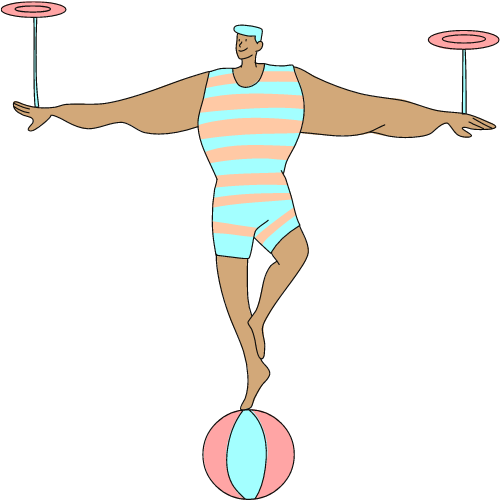The PDCA method is widely used in the context of a policy ofcontinuous improvement. It is also known as the “Deming wheel”, after its inventor, because it helps to boost the efficiency of an organisation regardless of its type of activity. How can this four-phase method, its tools, processes and indicators optimize the implementation of the most relevant improvements? What are the different stages of this cycle to follow? We will try to answer all these questions.
Step 1: Plan
You will probably not be surprised to read that the first of the four phases of the Deming wheel is to establish a situation analysis. It is important to clearly identify the problems you wish to solve through such work. In a second phase, precise qualitative objectives will have to be set. This milestone will be invaluable in establishing the list of resources needed to make the process a success. Team buy-in is also critical to the success of the PDCA method. Raise awareness as soon as possible among the employees who will be involved in the project. In order to integrate them into the system effectively and to motivate them, communicate the objectives to be achieved in advance. At the same time, start writing the specifications. This document should also estimate the financial costs of the project and specify its planning. Finally, you will need to define performance indicators that will measure the effects of the improvements generated by the new processes. To succeed in this preparation stage, you will use various specific tools such as brainstorming, CATWOE, 20/80, the Ishikawa diagram (a visual tool for managing the causes influencing a situation), the 5 whys or the decision tree and matrix.

Step 2: Do (the realization)
Once the planning and preparation of the system is done, it’s time for the implementation! This involves both employees and management. The manager’s job is also to ensure that the provisions listed in the specifications and the schedule are respected. Don’t forget the indispensable test periods before considering a production launch of the solution. The scope of cases to be checked should be as large as possible in order to reduce possible bugs and other side effects.Step 3: Check
Start by reading the test results. Are they in line with the expectations set in the first step? Do they allow us to envisage a large-scale use, or even a generalization of the solution? If at least one answer to these two questions is negative, you will not be able to proceed to the next step. Take the time to understand the reasons for this failure (even partial) in order to learn the necessary lessons, which will undoubtedly enable you to progress later.
A tool to implement
a continuous improvement process?

Step 4: Act (the improvement)
We are now at the final stage of the PDCA method! The previous successes allow you to deploy the new solution to benefit as many people as possible. But don’t think that this is just a formality. On the contrary, it is a task that requires some organization. Depending on the importance of the project’s stakes, it may be subject to special budgeting or require different management and staff training. The actions implemented may also sometimes require a reorganization of services. To optimize it, it is essential to put in place a real change management policy. Do not neglect the importance of updating the documentation of the various procedures affected. Once the solution is actually deployed, this last step is not completely finished. The new actions have been designed to be long term. It is therefore necessary to regularly measure their real effectiveness in order to ensure that the effects are in line with the objectives defined at the start of the project. If the indicators provide unsatisfactory results, even several months or years after the solution has been put into production, this stage is logically considered a failure.Rigor and recursion
Like all other continuous improvement toolsThis method implies a strict respect of the principles implemented by its inventor. To solve the problems and achieve your goals, you will have no alternative but to follow the four steps carefully. The Deming wheel does not allow for skipping any of the phases or even going backwards. To remind you of this rule, the wheel is often represented with a wedge. This symbolically blocks the process until the step being processed is successful. After reading this text, you know what you have to do to remove that wedge! Finally, you should also realize that this method actually has no end. Each time you finish the last phase of the cycle, you will instantly return to the first phase, as required by a logic of continuous improvement. In practice, this method consists of defining an action plan, implementing it and then drawing all the possible lessons from it. These will then allow you to improve the plan initially used and so on until perfection… if it exists, of course!
